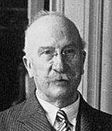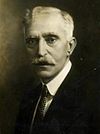Spanish general election, 1931
|
|
|||||||||||||||||||||||||||||||||||||||||||||||||||||||||||||||||||||||||||
|
|||||||||||||||||||||||||||||||||||||||||||||||||||||||||||||||||||||||||||
|
|||||||||||||||||||||||||||||||||||||||||||||||||||||||||||||||||||||||||||
|
|||||||||||||||||||||||||||||||||||||||||||||||||||||||||||||||||||||||||||
Elections to Spain’s legislature, the Cortes Generales were held in 1931.
General Primo de Rivera, who had run a military dictatorship in Spain since 1923, resigned as head of government in January 1930. There was little support for a return to the pre-1923 system, and the monarchy had lost credibility by backing the military government.Dámaso Berenguer was ordered by the king to form a replacement government, but his dictablanda dictatorship failed to provide a viable alternative. In the municipal elections of 12 April 1931, little support was shown for pro-monarchy parties in the major cities. King Alfonso XIII abdicated and the Second Spanish Republic was formed.
The Second Republic was a source of hope to the poorest in Spanish society and a threat to the richest, but had broad support from all segments of society. Niceto Alcalá-Zamora was the first prime minister of the Republic. The wealthier landowners and the middle class accepted the Republic because of the lack of any suitable alternative.
An electoral law of May 1931 replaced the previous single-member constituencies with much larger multi-member ones. The Senate was abolished and thus the government became unicameral. There would be one seat for every 50,000 people, with a separate seat for any city with more than 100,000 inhabitants. Any electoral list gaining an outright majority of votes in a district would be guaranteed and simultaneously restricted to 80% of the seats. A list winning a plurality of votes but that failed to win a majority would receive two thirds of the seats. The remainder would be passed to the second list if they received 20% of the vote. Voters would be entitled to vote for as many or as few districts as they liked. The system favoured multi-party coalitions that could thus win a majority of votes.
...
Wikipedia






